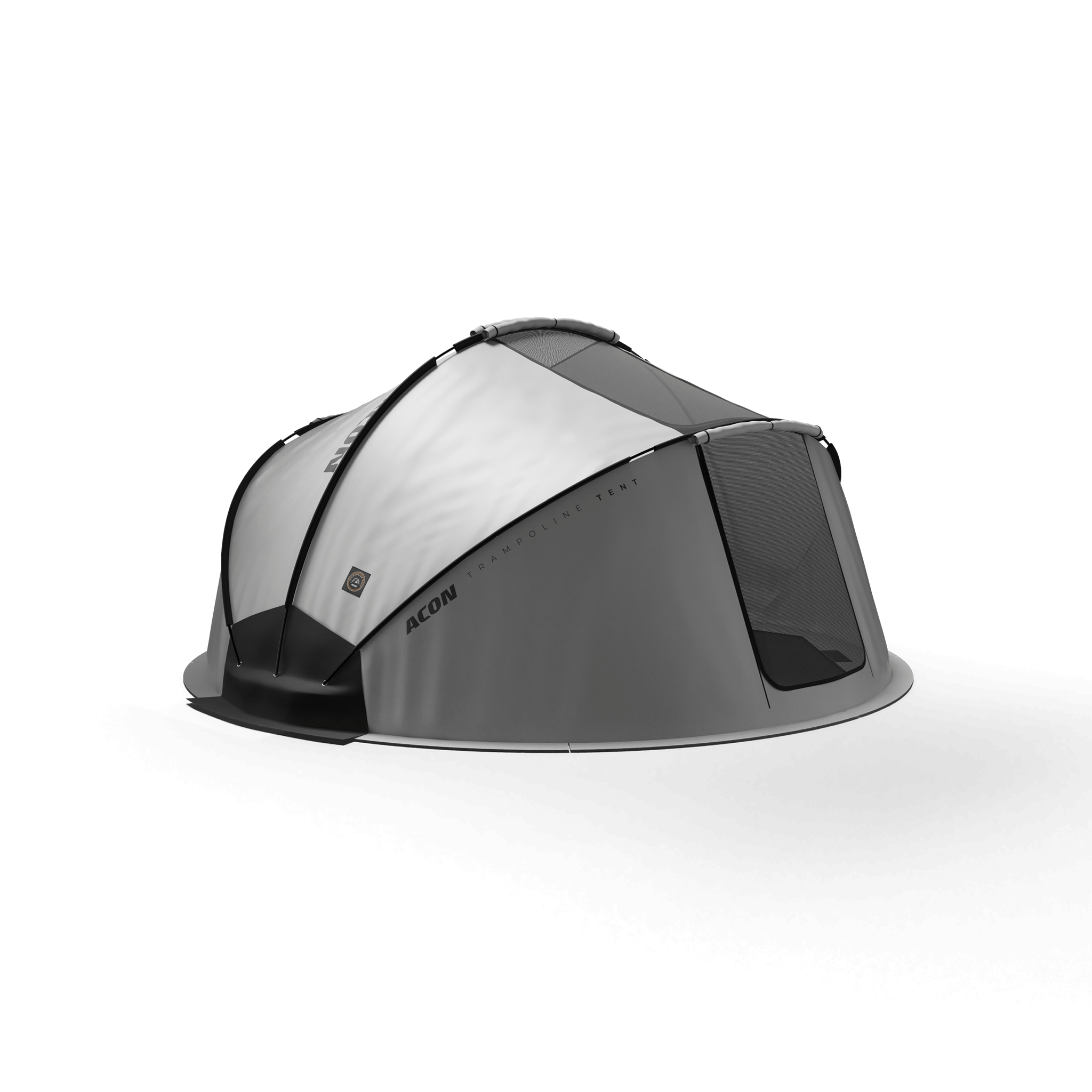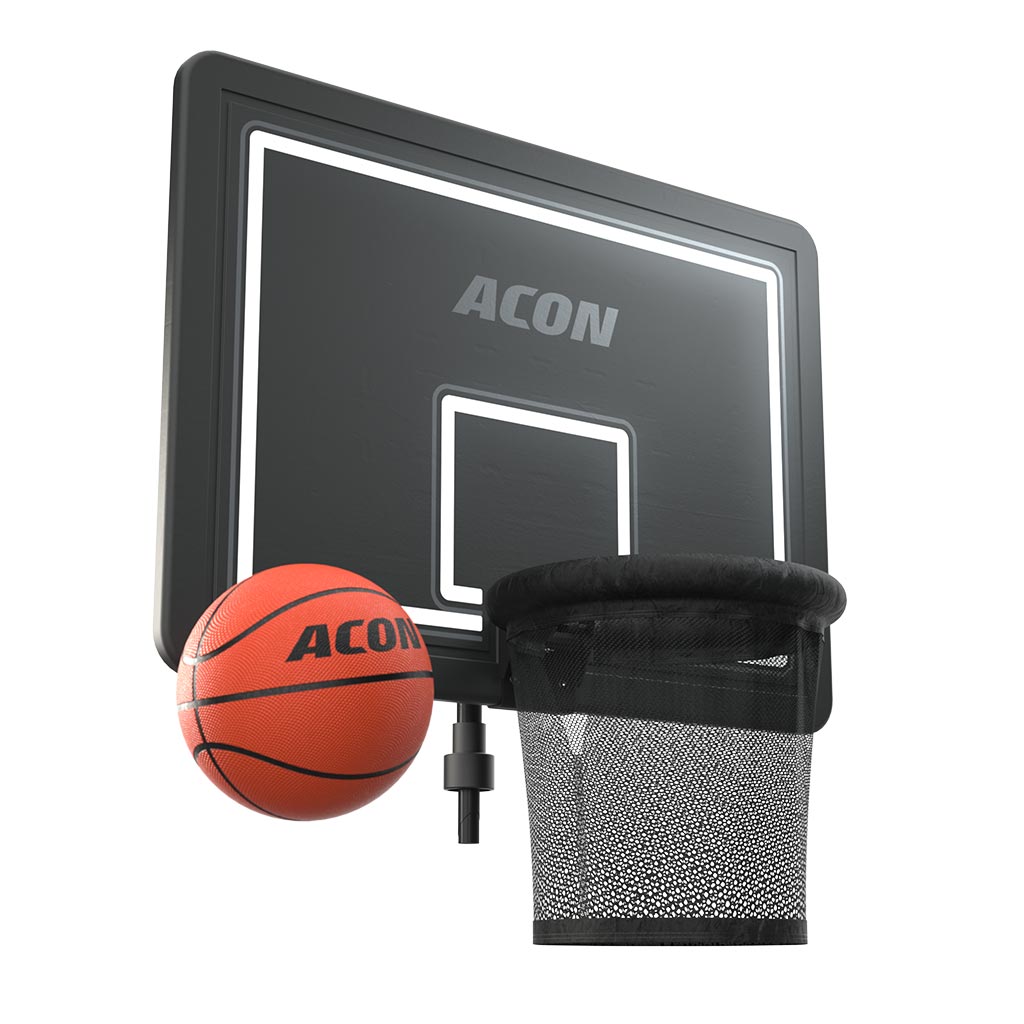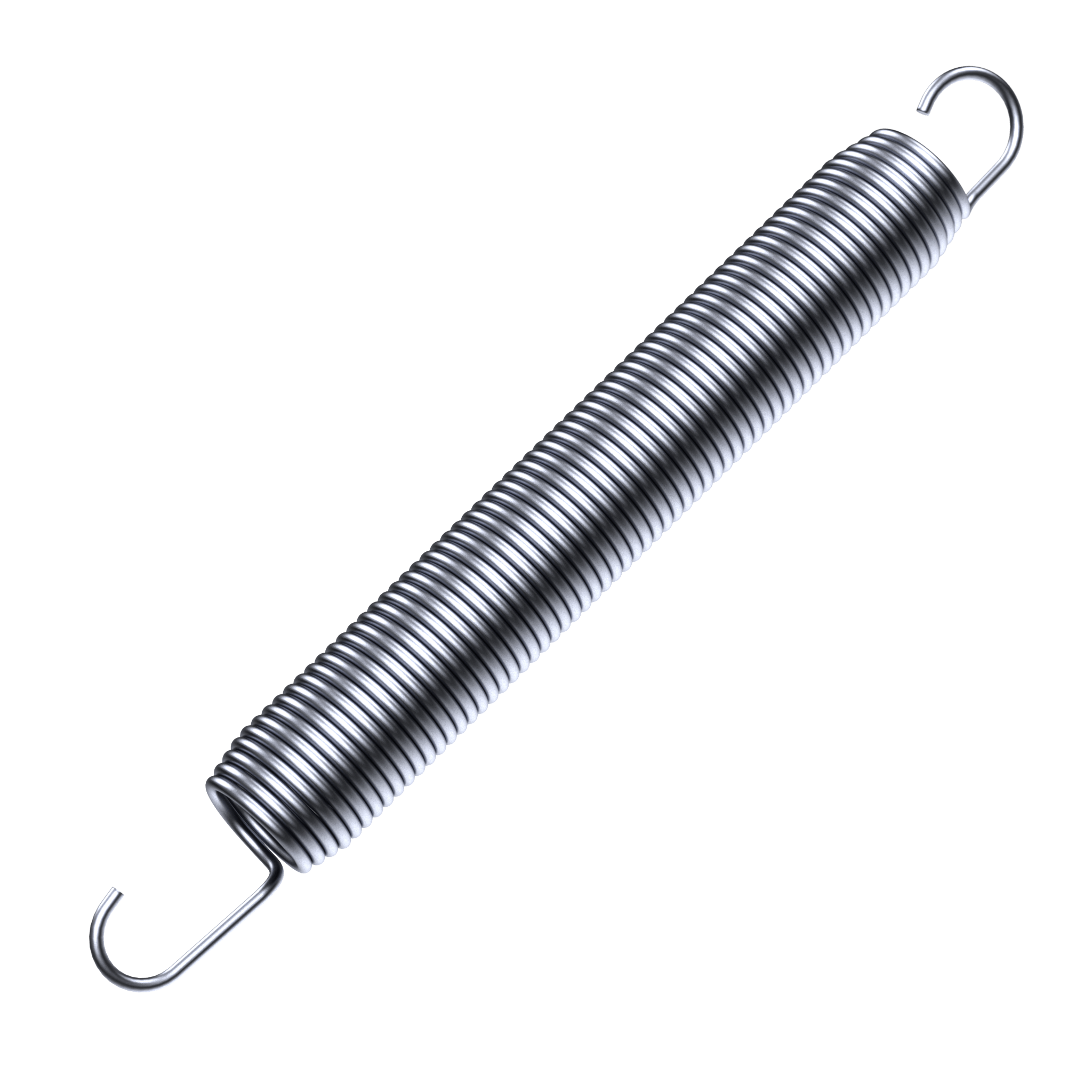Distributacon Inc.
1250 Wayzata Blvd E Unit 1127,
Wayzata, MN 55391, USA
The Evolution of Trampolines
Trampolines have come a long way since the earliest days of bouncing. In the meantime, innovative designs have been developed to cater to the different types of jumpers and their safety concerns. Traditional spring trampolines use metal springs to create a dynamic and responsive bounce, making them popular among fitness enthusiasts and athletes. The bounce quality is often higher in these trampolines, providing an exhilarating experience for people who enjoy acrobatics or high jumps.
On the other hand, springless trampolines have emerged as an option for those seeking to avoid spring-related issues, using flexible rods instead of metal springs. This creative design feature focuses on reducing possible injury risks associated with springs. While the springless design does sacrifice the bounciness and control of the bounce achieved with premium garden and competitive trampolines that use springs, it still offers the fun of a regular bouncing experience.
How Spring-Based Trampolines Work
Spring trampolines function by harnessing the tension created by metal springs. When a user jumps, the springs compress before extending, propelling the jumper back into the air. This mechanism allows for a high-performance bounce that is ideal for fitness routines, acrobatics, and advanced tricks.
Additionally, spring trampolines are designed to be durable and can support significant weight, making them a reliable option for families and/or individual budding gymnasts. However, the need for occasional maintenance, such as spring replacements, is something to consider.
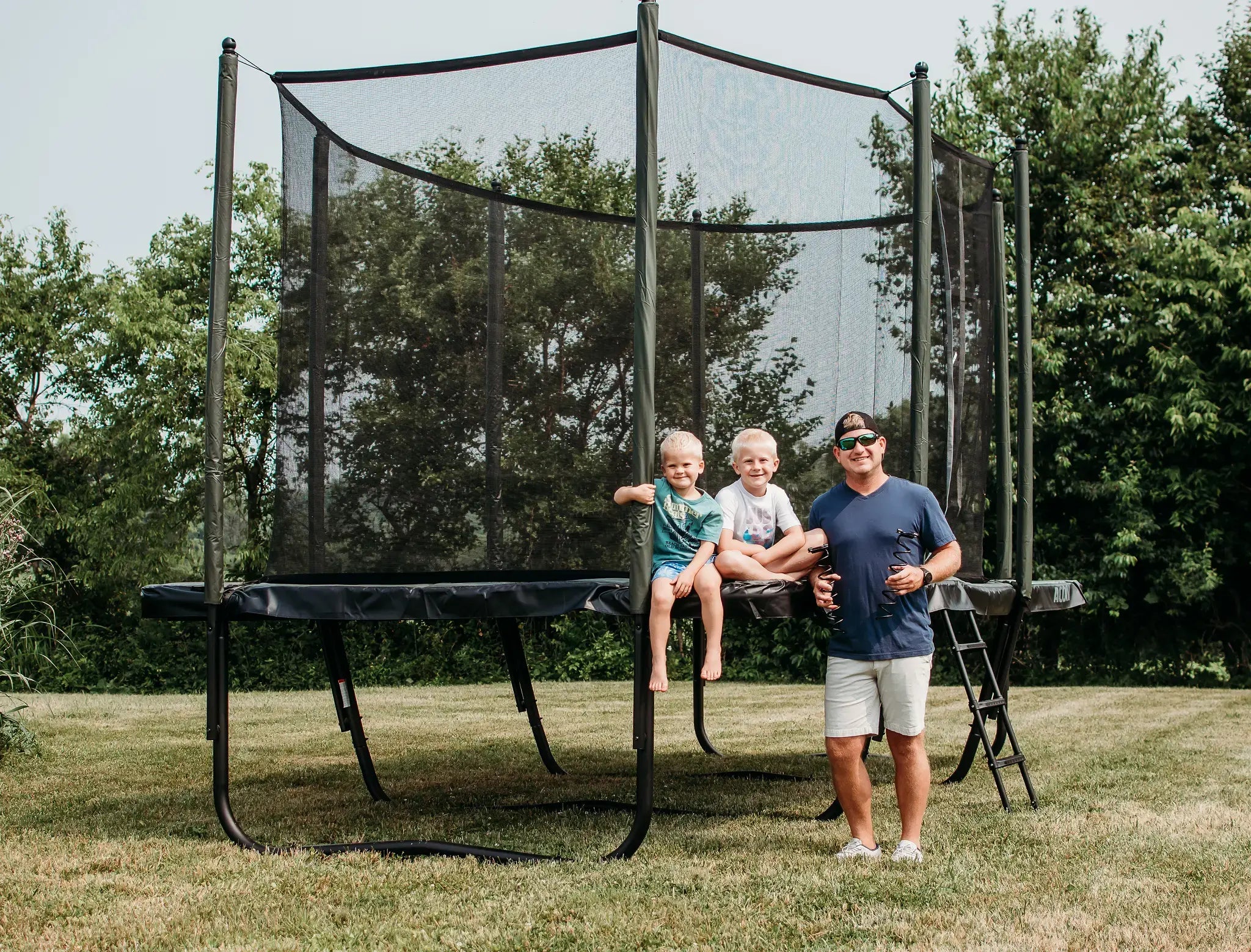
What Makes Springless Trampolines Different?
Springless trampolines, often referred to as spring-free trampolines, utilize a unique design that replaces metal springs with flexible rods. If you're concerned about your child's tendency to stick their hands where they might get pinched or caught, then a springless trampoline may be the preferable choice.
The bounce produced by springless trampolines is less bouncy. While this may not cater to advanced athletes seeking a high-energy bounce, it is perfect for casual users looking for a safe and enjoyable experience.
Safety: How Do They Compare?
Safety is the utmost concern when it comes to trampolining, and both spring and springless trampolines have their safety features.
Spring trampolines often come equipped with safety nets and padded edges to minimize any injury risks.
In contrast, springless trampolines eliminate the minor risks related to springs by using flexible rods. The absence of exposed springs makes springless trampolines a great choice for families prioritizing the peace of mind.
Performance: Which Offers the Better Bounce?
When it comes to bounce quality, spring trampolines generally outperform their springless counterparts. The springs create a higher and more energetic bounce, making them suitable for athletes and those looking to perform advanced tricks. Additionally, the jumping technique and the composition of the springs and mats on the trampoline significantly affect the bounce. These elements work together to enhance the overall performance and responsiveness of the trampoline.
On the other hand, springless trampolines provide a shorter and less-bouncy experience, making them ideal for those who prioritize safety and comfort in play over extreme performance. However, it's important to note that a similar softer and longer snap on the jumps can also be achieved with specialized springs, such as the Acon X Super Stretch Springs, which are designed to enhance bounce while maintaining a high level of safety and control.
Durability and Maintenance
Durability is an important factor to consider when purchasing a trampoline. Spring trampolines are typically made with durable materials and can withstand regular use. However, they require occasional maintenance, such as replacing worn-out springs, to ensure optimal performance.
Springless trampolines, while having fewer moving parts, may experience rod degradation over time. Nonetheless, they often require less maintenance than traditional spring trampolines, making them a convenient option for busy families. It's important to note, however, that the inability to replace parts that are under heavy usage can affect the longevity of the product. In contrast, spring trampolines can withstand years of use with proper care and part replacements, often lasting from one generation to the next.

Cost: What’s the Better Value?
Let’s be real: cost is a crucial consideration! Generally, spring trampolines are more affordable upfront, making them an attractive option for budget-conscious consumers. However, it’s important to factor in long-term costs, including potential maintenance and replacement parts. Additionally, the longevity of spring trampolines, when maintained properly, can offer greater value over time. This not only supports sustainability by reducing the frequency of replacements but also ensures that the investment pays off in the long run.
Springless trampolines typically come with a higher initial price tag but emphasize safety and durability, making them a worthwhile investment for families. The long-term benefits of reduced pinch-injury risks and lower maintenance requirements can offset the higher upfront cost. Despite these advantages, the lifecycle of springless trampolines may not be as extended as that of spring trampolines.
Spring vs. Springless Trampolines: Which Should You Choose?
As we’ve seen, both spring and springless trampolines offer customers a variety of different strengths and weaknesses.
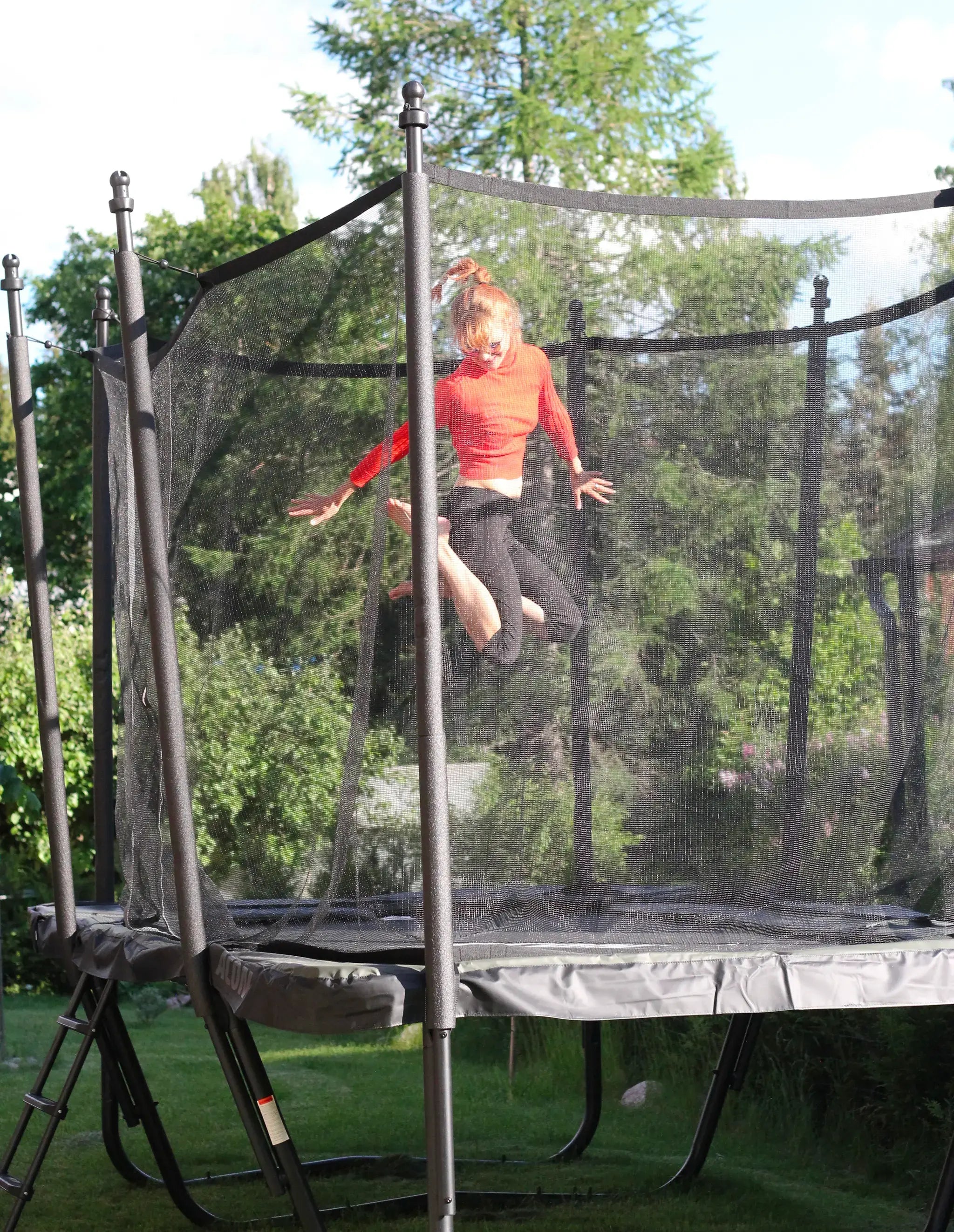
- Choose spring trampolines if you prioritize performance, bounce quality, longevity and sustainability. They are ideal for fitness enthusiasts and athletes looking for a dynamic jumping experience. Investing in a high-quality spring trampoline allows for high-end safety features on top of superior bounce, and the ongoing maintenance and part replacement options serve your family potentially for generations to come.
- Opt for springless trampolines if pinch points and fingers being stuck where they shouldn’t be your primary concerns, especially for families with young children. Their innovative design and minimal bounce make them a good choice for casual users. Choose springless for a soft playpen-like experience; for true bouncing fun and a more dynamic experience, spring trampolines are ideal. It’s important to acknowledge that without springs, the high-energy bounce simply cannot be achieved.
In conclusion, both spring and springless trampolines offer benefits that cater to different needs and preferences. Ultimately, it’s best to get clear on your family’s priorities in terms of safety, performance, and budget. Once you know what they are, you can make the best trampoline choice for your fun, fitness, or family activities.
Trampolining FAQs
What’s the main difference between spring and springless trampolines?
The main difference lies in their construction: spring trampolines use metal springs for bounce, while springless trampolines utilize flexible rods.
Are springless trampolines safer?
Springless trampolines reduce the risk of injuries from exposed springs, but most trampoline injuries result from multiple jumpers at the same time, especially when there are significant size differences.
Which trampoline is better for advanced tricks?
Spring trampolines are better suited for advanced tricks and acrobatics due to their higher bounce quality and responsiveness.
Are springless trampolines worth the higher cost?
For families prioritizing safety and lower maintenance, springless trampolines can be a worthwhile investment despite the higher upfront cost.
How long do spring trampolines last?
With proper maintenance, spring trampolines can last several years, but the lifespan may vary depending on usage and environmental factors.
What is a springless trampoline?
A springless trampoline is a type of trampoline that uses flexible rods instead of metal springs, providing a safer and gentler bouncing experience.


